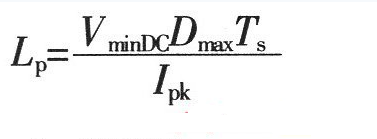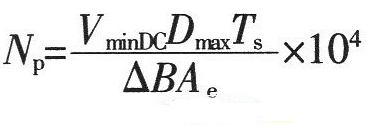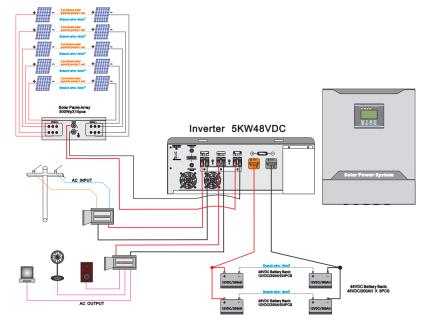1. Maximum Duty Cycle Dmax of MOSFET Switch Operation:


In this formula, Vor represents the reflected voltage from the secondary side to the primary side. When the input is AC 220V, this value is typically around 135V. VminDC refers to the minimum DC voltage after rectification, and VDS is the voltage between the drain and source of the MOSFET when it's turned on, usually taken as 10V. These values are essential for determining the maximum duty cycle, which directly affects the efficiency and performance of the power supply.
2. Peak Primary Winding Current of the Transformer, IPK:


This equation calculates the peak current in the primary winding of the transformer. Here, η stands for the conversion efficiency of the transformer, and Po is the rated output power in watts. Understanding the peak current is crucial for selecting the right components and ensuring thermal stability during operation.
3. Primary Inductance of the Transformer, LP:


LP represents the inductance of the primary winding. Ts is the switching period, and the unit of LP is Henry (H). This parameter plays a key role in determining the energy storage capability of the transformer and its ability to handle high-frequency switching without saturation.
4. Air Gap lg of the Transformer:


The air gap lg is an important factor in controlling the magnetic flux and preventing core saturation. It depends on the effective cross-sectional area of the core (Ae), the change in magnetic induction (ΔB), and the inductance (LP) and peak current (IPK). A proper air gap ensures stable operation under varying load conditions.
5. Transformer Core Selection:

Flyback converters typically use small power levels, so ferrite cores are commonly used due to their low loss at high frequencies. The power capacity AP of the core can be calculated using the window area (AQ), effective core area (Ae), output power (Po), switching frequency (fs), and other parameters. Choosing a core with a slightly larger margin ensures reliable performance and minimizes losses.
6. Number of Turns on the Primary Side, NP:


NP is the number of turns on the primary winding. It depends on the change in magnetic induction (ΔB), the effective core area (Ae), and the switching period (Ts). Proper turn calculation ensures that the transformer can store and transfer energy efficiently without overloading the core or windings.
7. Number of Turns on the Secondary Side, NS:


NS is the number of turns on the secondary winding. It is influenced by the forward voltage drop of the secondary rectifier diode (VD) and the desired output voltage. Correct turn ratio is essential for achieving the required output voltage and maintaining good regulation across different loads.
8. Selection of Power Switching Transistor:

The minimum voltage stress (UDS) on the switch transistor is critical for component selection. A MOSFET with a breakdown voltage slightly higher than the calculated value is typically chosen to ensure safe and reliable operation under all operating conditions.
9. Copper Losses in Windings, PCU:


Copper losses occur in both the primary and secondary windings due to the resistance of the wire. By calculating the winding resistance (R), you can estimate the losses based on the peak current (IPK) for the primary and the output current (Io) for the secondary. Minimizing copper losses improves overall efficiency.
10. Core Loss:


Core loss is dependent on factors like switching frequency, magnetic induction, and core material. For bipolar switching transformers, core loss is calculated using the specific core loss per kilogram (Pb) and the core mass (Gc). Unipolar switching reduces core loss by about half, as the core operates only on one half of the hysteresis loop. The total loss in the transformer is the sum of copper and core losses, which must be minimized for optimal performance.
Pure sine ware output
Optional MPPT/PWM solar charge controller 60A
MPPT Efficiency max 98%
DC Start & Automatic Self-Diagnostic Function

On/Off Grid Solar Inverter,Hybrid Inverter With Mppt Charge,pure sine wave solar inverter
suzhou whaylan new energy technology co., ltd , https://www.xinlingvideo.com